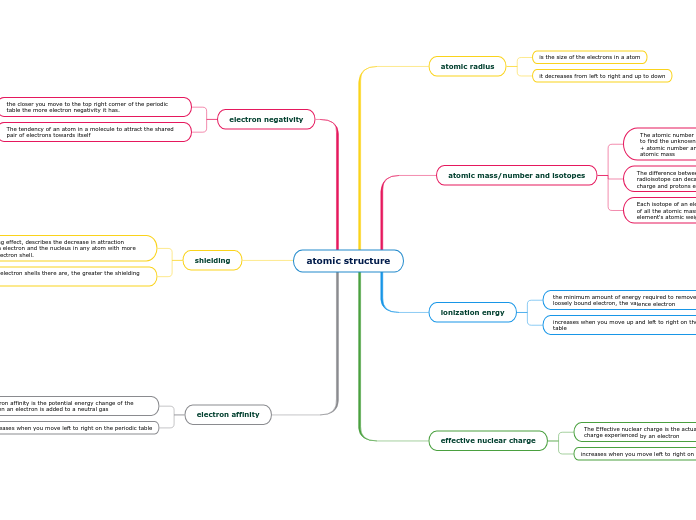atomic structure
atomic radius
is the size of the electrons in a atom
it decreases from left to right and up to down
atomic mass/number and isotopes
The atomic number and atomic mass can be used in equations to find the unknown one. To get the atomic mass is neutrons + atomic number and to get atomic number is neutrons - atomic mass
The difference between isotopes and radioisotopes is that a radioisotope can decay because the isotope has less nuclear charge and protons escape
Each isotope of an element has an atomic mass. The average of all the atomic masses of an element's isotopes gives an element's atomic weight
ionization enrgy
the minimum amount of energy required to remove the most loosely bound electron, the valence electron
increases when you move up and left to right on the periodic table
effective nuclear charge
The Effective nuclear charge is the actual amount of positive charge experienced by an electron
increases when you move left to right on the periodic table
electron negativity
the closer you move to the top right corner of the periodic table the more electron negativity it has.
The tendency of an atom in a molecule to attract the shared pair of electrons towards itself
shielding
the shielding effect, describes the decrease in attraction between an electron and the nucleus in any atom with more than one electron shell.
The more electron shells there are, the greater the shielding effect
electron affinity
The electron affinity is the potential energy change of the atom when an electron is added to a neutral gas
increases when you move left to right on the periodic table
